Proportion 2:3 | Adopted on 5 September 1945 Country Vietnam | |
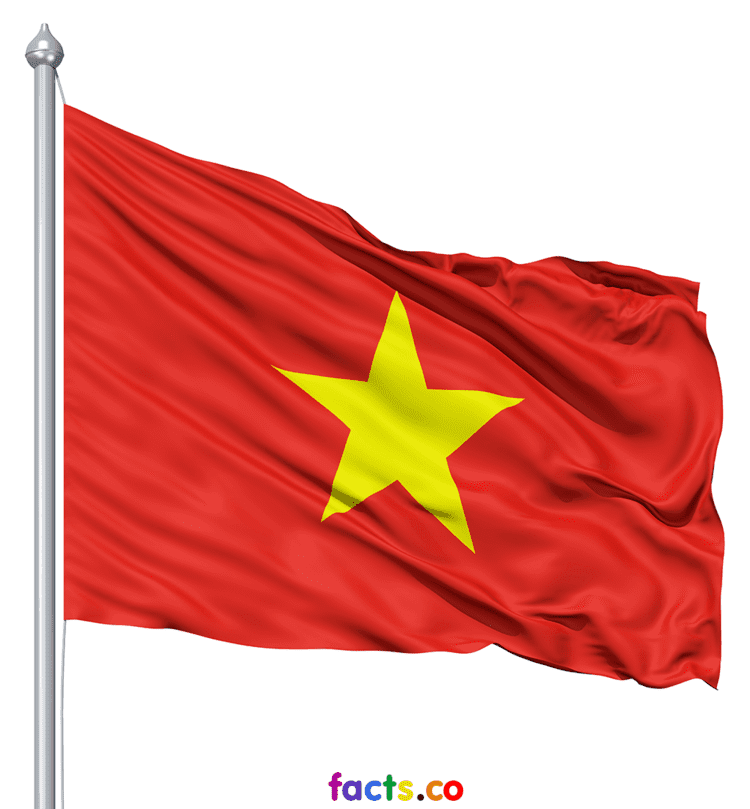 | ||
Name Cờ đỏ sao vàng ("Red flag with a gold star") Designed by Nguyễn Hữu Tiến (or Lê Quang Sô) Design A yellow star centered on a red field, and yellow words "Quyết thắng" (determined to win) in the upper left. Designed by Design is a variant of the flag of Vietnam | ||
Flag of vietnam
The flag of Vietnam, or "red flag with a gold star" (cờ đỏ sao vàng), was designed in 1940 and used during an uprising against French rule in southern Vietnam that year. The background was inspired by the red flag, used by the international communist movement since the Paris Commune of 1871. Red symbolizes the goals of social revolution behind the Vietnamese, national uprising. The star represents the five main classes in Vietnamese society—intellectuals, farmers, workers, businessmen and military personnel.
Contents
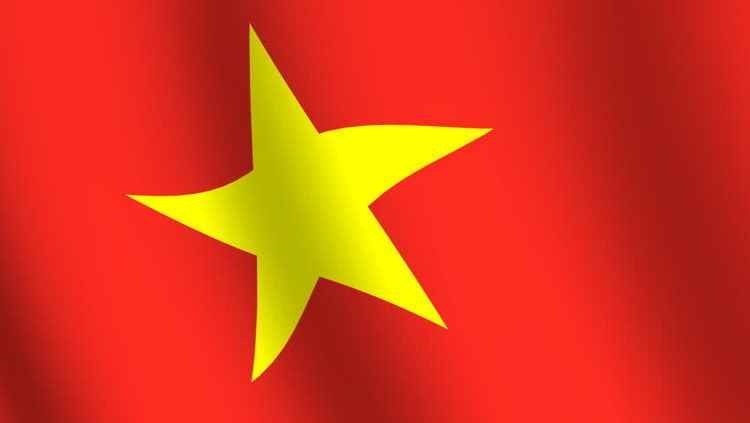
The flag was used by the Viet Minh, a communist-led organization created in 1941 to oppose Japanese occupation. At the end of World War II, Viet Minh leader Ho Chi Minh proclaimed Vietnam independent and signed a decree on September 5, 1945 adopting the flag as the flag of the North Vietnam. The DRV became the government of North Vietnam in 1954 following the Geneva Accords. The flag was modified on November 30, 1955 to make the edges of the star sharper. Until the end of the Vietnam War in 1975, South Vietnam used a yellow flag with three red stripes. The red flag of North Vietnam was later adopted as the flag of the unified Vietnam in 1976.
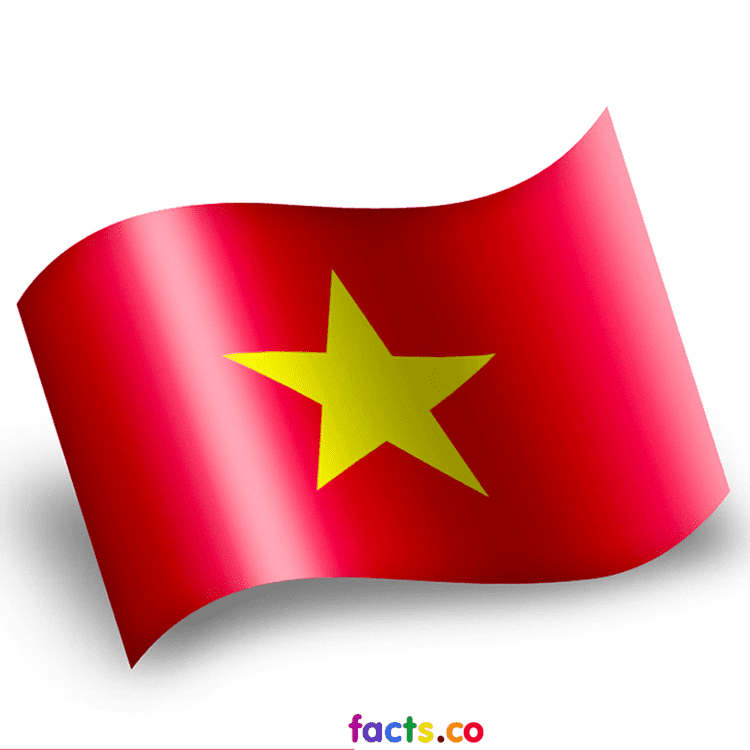
Design and history
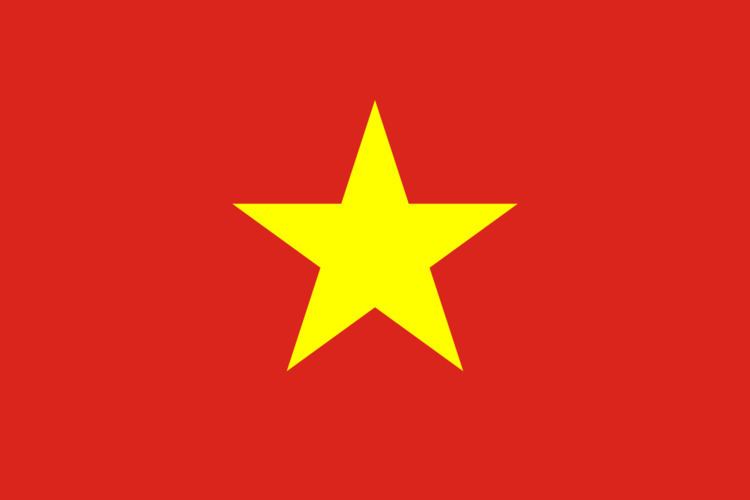
According to the 1992 constitution: "The National Flag of the Socialist Republic of Vietnam is rectangular in shape, its width is equal to two thirds of its length, in the middle of fresh red background is a bright five-pointed golden star".
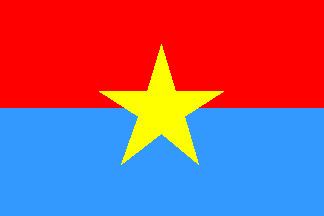
The flag first appeared in the southern uprising (Nam Kỳ Khởi nghĩa) of November 23, 1940, against French rule in southern Vietnam. A series of articles by Sơn Tùng on the origin of the flag were published in the state media in 1981. Sơn Tùng stated that the flag was designed by Nguyễn Hữu Tiến, a leader of the uprising who was arrested by the French in advance of the failed uprising and executed Aug. 28, 1941. Tiến, who was born in the northern village of Lũng Xuyên, was unknown to the Vietnamese public before Tùng's research was published. According to a poem Tiến wrote, the red background represents blood while the yellow foreground represents "the color of our race’s skin", the five points of the star represent intellectuals, peasants, workers, traders and soldiers. Tiến's poem reads in part:

In April 2001, Vietnam's Ministry of Culture reported that there was no documentation to support the claim that Tiến designed the flag. In 2005, Lê Minh Đức, an official of Tiền Giang province, suggested that the flag was designed by another cadre, Lê Quang Sô, a native of Mỹ Tho Province in the Mekong delta. Đức's theory is based on statements by Sô's son as well as Sô's 1968 memoir. According to Đức, yellow was chosen to represent Vietnam while the red background was inspired by the flag of the Communist Party and represents revolution. Sô experimented with stars in various positions and sizes before choosing a large star in the center for aesthetic reasons. In April 1940, the flag was approved by Phan Văn Khỏe, the Communist party chief of Mỹ Tho. It was subsequently approved by the national party in July. As of 2006, the state media has not commented on Đức's version of events.
The flag was displayed at a conference on May 19, 1941, at which the Viet Minh was founded. The Viet Minh proclaimed it a "national flag" on August 17, 1945, at a meeting held in the village of Tân Trào in the North. When the Japanese surrendered at the end of World War II, the Viet Minh entered Hanoi and proclaimed the "Democratic Republic of Vietnam" on September 2. On September 5, DRV President Ho Chi Minh signed a decree adopting the Vietminh flag. French troops returned in October and restored colonial rule in the South. The National Assembly voted unanimously to adopt the flag on March 2, 1946. Following the Geneva Accord between Viet Minh and France in 1954, the DRV became the government of North Vietnam. On November 30, 1955, the flag's design was modified slightly to make the star smaller and its edges straighter. This followed a similar modification of the flag of the Soviet Union. The flag was adopted in the South after the end of the Vietnam war, and North and South were unified as the Socialist Republic of Vietnam on July 2, 1976.
Historical flags
Traditional images show the Trung sisters wearing yellow turbans during their revolt against China in AD 40. These were unwrapped and waved to signal the beginning of a fight. A yellow banner with a red circle in the center was adopted as a standard by Emperor Gia Long (r. 1802–1820). The flag of South Vietnam was originally designed by Emperor Thành Thái in 1890, and was revived by Lê Văn Đệ and re-adopted by Emperor Bảo Đại in 1948. The three stripes represented the Quẻ Càn, or Qian trigram, one of eight trigrams used in the I-Ching, a Taoist scripture. Quẻ Càn is the divination sign for heaven. Later, the stripes were reinterpreted to represent the northern, central and southern regions of Vietnam. The French, who gradually gained control of Vietnam in the late 19th century, flew the national flag of France. As the colony of Cochinchina (1864–1945), the South was under exclusive French authority. In contrast, North and Central Vietnam were protectorates with parallel systems of Vietnamese and French administration. Several flags were flown in these regions: the French flag, the Vietnamese imperial flag, and a "protectorate flag." From 1920 to 1945, the Vietnamese imperial flag had a yellow background with a single, broad red stripe.
Japan occupied Vietnam in 1941-1945. In March 1945, the Japanese deposed the French colonial authorities and proclaimed an Empire of Vietnam with Bảo Đại as emperor. The Quẻ Ly Flag, also a red trigram on a yellow background, was adopted in June. Among other things, Quẻ Ly symbolizes the direction south. Bảo Đại abdicated in August when Japan surrendered. The French returned in October 1945, but were challenged by the Vietminh, especially in the North. The French proclaimed Cochinchina a republic in June 1946. This puppet state adopted a Quẻ Càn flag with blue stripes on a yellow background.
In May 1948, the name of the Cochinchina government was changed to "Provisional Central Government of Vietnam" in preparation for a merger with the North outlined in the Hạ Long Bay agreements between France and Bảo Đại. Artist Lê Văn Đệ (1906–1966) met Bảo Đại in Hong Kong in 1948 and proposed that the Quẻ Càn flag of Emperor Thành Thái be restored. On 2 June 1948, Chief of State Nguyễn Văn Xuân, signed an ordinance to adopt this flag: "The national emblem is a flag of yellow background, the height of which is equal to two-thirds of its width. In the middle of the flag and along its entire width, there are three horizontal red bands. Each band has a height equal to one-fifteenth of the width. These three red bands are separated from one another by a space of the band's height." This flag was used in the South until 1975. It continues to be used by overseas Vietnamese as the "Heritage and Freedom Flag", but is de facto banned in Vietnam.
